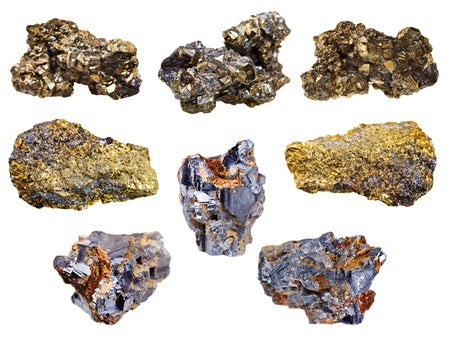Dazzling Drusy Crystal: A Hot Item in Today’s Jewelry Market
One form of quartz crystal that is becoming more popular among jewelry designers today is known as the Drusy (pronounced DREW-zee) mineral. Oddly enough, there are many different spellings, including “druzy,” “drusie,” “druse,” and even “drusies.” The word itself originated from the German word, druse, and is defined as a beautiful grouping of very tiny crystals that grows on the surface of a stone. It is also not uncommon for drusy to form in the cavity of a geode or larger pocket of a mineral deposit.

When groundwater carries dissolved silica and forces it into a porous area of rock, rapid cooling occurs. Tiny crystals, the drusy crystals, then form on the surface or in the cavity of that rock. It may be composed of the same material as the base rock, or it may consist of a layer of clear quartz over different material. Chrysocolla, azurite, malachite, and uvarovite (pronounced oo-vare-oh-vite) are just a few of the many forms of drusy out there.
Up until about ten years ago, drusy minerals were of little interest to most, but their use to gem carvers and jewelry designers has raised awareness and notoriety to the general public. Perhaps one reason for its sudden popularity is because it has so many unique characteristics. The crystal clusters grow in outward-facing positions and are angular in shape. Its basic structure, which resembles sugar crystals, is very interesting in appearance, but when forming in its natural state may take a long time to grow. Most non-quartz species are natural and come in a multitude of colors—also an attractive feature for jewelry designers and connoisseurs alike. It forms in colors of green, blue, black, white, orange, and even polka-dot. It may be surprising to know that even colors such as hot pink (cobalto-calcite) and multi-colored (rainbow pyrite) forms of drusy occur in the natural world—not at all color-enhanced by man.
Most non-quartz species are natural and come in a multitude of colors—also an attractive feature for jewelry designers and connoisseurs alike. It forms in colors of green, blue, black, white, orange, and even polka-dot. It may be surprising to know that even colors such as hot pink (cobalto-calcite) and multi-colored (rainbow pyrite) forms of drusy occur in the natural world—not at all color-enhanced by man.
The fact that it has been around for thousands of years, makes it popular among the general public. It is strongly associated with interesting folklore and healing properties that give it additional appeal. Many who wear it even today believe in its powers—just as those of ancient times did.
Generally speaking, all drusy crystal is thought to help promote inner strength and is even believed to encourage ideas or thought forms to grow. Specific forms of the stone, however, are known to have their own individual benefits. For example, Chrysocolla, a light green or sky blue stone promotes creativity, female energy, communication, and even aids in the relief of ulcers and arthritis. It is also associated with peace, patience, and unconditional love. Malachite, on the other hand, has powers of protection, success in business, and was often worn to detect impending danger. It was thought to break into tiny pieces when danger was near. Folklore says that Azurite, named after its azure or deep-blue color, was used in ancient cultures to contact divine consciousness. For this reason, it was also known as “the stone of heaven.” Its purifying effect on the mind and body helped one connect with the highest wisdom.
People appreciate drusy crystals for many different reasons. For some, it’s for its aesthetic beauty. For others, it’s for its healing powers and nurturing properties. Whatever the reason, it is certainly considered nothing less than a lovely gift from nature.
Photo Credit:

